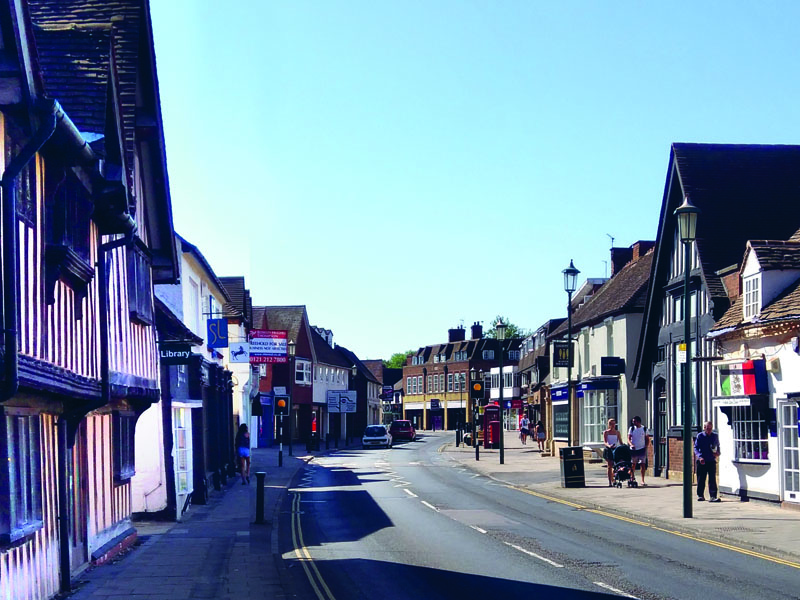Taking a walk along the High Street one might start at the junction with Kenilworth Road where history faces you from all sides. On the one corner stand the Berrow Homes, fine old buildings in their own right, but standing now on what was the village green, replete with stocks, in centuries past.
Opposite, the Knowle Indian Brasserie, 1690 High Street, occupies what was, from 1835 to 1934, a Congregational chapel. This having then moved to new premises on Station Road, and being now known as the United Reformed Church.
On the very corner of the junction stands Sugarbliss. From 1912 until the 1930s this was Knowle Police Station, but most residents remember it as Maddocks Newsagents, a much respected servant of the village until its closure over a decade ago.
Almost opposite that stands the Red Lion, one of four public houses that served both the village and travellers on what was once the Warwick Turnpike, became the A41 and remains a busy through route today. The Red Lion dates from the 17th century and some evidence of its true age remains even now. Nearby, alas, the second of these four inns is now no more. The fine timbered frontage of the White Swan went when it was demolished in 1939. What was, until recently, the National Westminster Bank now stands in its place.
A few doors down from the junction, the highly successful Bread Collection took over from Curtis’ Bakery which operated in the building serving the village for a century until a few years ago.
There are a number of original cottages that date from the 16th/17th centuries to be seen operating as business premises now as one walks the full the length of the High Street. A good example is another Indian Restaurant, the Ellora, which with its attached neighbour, Oxfam, have seen about 400 years of change.
At the far end of the High Street, then, stand the other two old public houses. At the junction with Lodge Road, was The Rising Sun, now the Wilson Arms. Back up the hill from there the coaching inn called the Mermaid was the place to stay on the High Street from the early days of horse drawn travel. Like its near neighbour, it takes its present name from a former Lord of the Manor, in this case Henry Greswolde Lewis.
